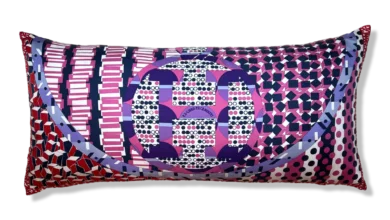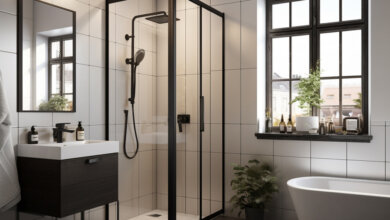
You’ve picked out the perfect paint shade—a cool ivory, maybe a calming seafoam green. It looks flawless at first, but within a year, cracks appear, and the colour starts to flake. Sounds familiar? The culprit might not be the paint, but what’s underneath: skipped wall putty.
Surface preparation is often the unsung hero of a long-lasting paint job. Before any brush meets a wall, what you do underneath determines how well the topcoat performs. And when it comes to prepping right, Acrylic wall putty is a name that often comes up. But is it just hype, or does it truly make a difference in extending the life of your walls? Let’s dig in and find out what makes this step so important, especially for homes in challenging Indian climates.
What is Wall Putty and Why Use It?
Wall putty can simply be described as a skincare primer on the walls. It is a smoothing material used prior to primer and paint, which is intended to smooth out small cracks, undulations, and pores on the plastered surface.
Think of it this way: trying to paint over an untreated wall is like applying makeup without moisturizing first—uneven, patchy, and short-lived. The paint clings to imperfections, amplifying them rather than hiding them.
While basic putties do the job for dry, stable interiors, Acrylic wall putty offers an upgrade. It has better adhesion, resists moisture, and flexes slightly with wall movements, making it ideal for long-term performance in Indian homes where humidity, dust, and temperature shifts are common.
Additionally, the smooth finish it provides makes the paint application easier, requiring less paint to achieve the same coverage. This not only saves material but also enhances the richness and uniformity of the final look.
The Paint Longevity Myth—Or Reality?
So, does putty actually help paint last longer? The short answer: yes—but let’s unpack that.
- Reduces Surface Flaws: Uneven surfaces, cracks, and tiny holes create weak spots that lead to flaking and peeling. Putty acts as a filler, evening out the wall to give your paint a smooth, solid base. When the surface is flawless, the paint adheres better and looks more refined.
- Better Paint Adhesion: A paint’s grip is only as strong as the surface beneath it. Acrylic wall putty creates a receptive surface that binds well with the primer and topcoat. This improved adhesion means your paint is less likely to blister or bubble over time.
- Cracking Resistance: Walls naturally expand and contract with changing weather. Poor surface prep can lead to paint cracking over time. Quality putty absorbs minor stress and reduces this issue, keeping your paint looking fresh and intact.
- Paint Retention: Bare plaster is highly absorbent. Without a buffer, it drinks up the paint, leaving faded, patchy results. Putty helps moderate that absorption, so the paint holds its vibrancy longer. Think of it as an insulation layer that protects your colour investment.
Enter wall primer: a crucial teammate to putty. While putty evens the surface, primer seals it, creating a layer that helps paint spread evenly and stay put. Skipping either can significantly cut down your paint’s lifespan and diminish the overall look.
Homes that skip this step often find themselves repainting sooner than expected, which costs more in the long run. With proper layering, the need for touch-ups can be delayed by years.
Don’t Skip the Base: Primer & Putty Together
If putty is the canvas, then Acrylic cement primer is the setting spray. They work hand-in-hand for paint that not only looks good but lasts longer.
Here’s why it matters:
- Never Apply Primer on Raw Plaster: Directly painting over fresh plaster, even with primer, leads to patchy absorption and poor durability. The surface is too thirsty and uneven, which means your paint won’t spread or stick properly.
- Role of the Primer: Wall primer creates a seal over the porous putty surface, reducing paint wastage and improving colour uniformity. It enhances the bonding between the putty and the paint layer, acting like a bridge between the base and the finish.
- Correct Order Matters: The golden sequence? Plaster → Putty → Primer → Paint. Skipping steps or jumbling them disrupts the finish and longevity. It’s not just about beauty—it’s about structural integrity and protection from environmental damage.
When combined correctly, Acrylic cement primer and wall putty form a strong, even foundation, making the topcoat both aesthetically pleasing and more durable. This duo is the secret weapon behind many of the vibrant, long-lasting interiors you admire in homes and showrooms.
When Should You Avoid Wall Putty?
To be fair, wall putty isn’t always necessary. If your walls are already smooth and painted, and the existing coat is in excellent condition, you might be able to skip it. In such cases, a good sanding and a layer of Acrylic cement primer might suffice, especially if you’re repainting in a similar tone.
However, beware of overusing putty. Applying it too thickly or unevenly can cause cracks or flaking down the line. And using subpar products can undo all your careful prep. A bad putty job might even make your walls look worse post-painting.
Keep in mind that the purpose of putty is correction, not decoration. It should be used where needed and applied skillfully. If you’re unsure whether your walls need it, it’s wise to consult a painting expert.
Also, some decorative finishes may not be compatible with thick layers of putty, so always match the method to the material.
Conclusion: Foundation Before Finish
At the end of the day, beautiful walls don’t start with the paint—they start with what’s underneath. Skipping wall putty or wall primer might save time or money in the short term, but it often leads to disappointment down the line.
Investing in the right preparation process, including acrylic wall putty and Acrylic cement primer, means your chosen shade will shine brighter, stay vibrant longer, and resist the wear and tear of daily life. Brands like British Paints emphasize this foundational approach in their professional painting systems, helping homeowners achieve finishes that are both elegant and enduring.
Think of it as hidden strength—what you don’t see is exactly what makes your walls shine longer. And when you start strong, your home not only looks better—it stays better, for years to come.




